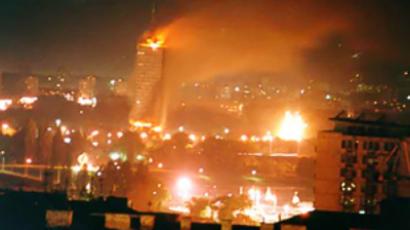“Why would big USSR want tiny Finland?” The Winter War remembered
It was a war one of the sides involved would rather forget, while the other fights to keep the memory alive. Finns are commemorating the 70th anniversary of the start of the Winter War against the Soviet Union.
After months of ultimatums, on November 30, 1939, the Soviet Union invaded Finland.
With a sizeable advantage in manpower, tanks and aircraft, the Red Army command expected victory within weeks.
“We could not understand why. The Soviet Union was so big, so why would they take something from us?” says Lars Loflund, Finnish war veteran.
Just months earlier, the Soviet Union and Germany had signed a non-aggression pact, which contained a secret protocol dividing North and East Europe into spheres of influence. Finland fell under the USSR's.
That fitted in with Stalin's plan to expand the Soviet border from its second city of Leningrad. However, the Soviet Union had underestimated the Finns.
The Finnish Commander, General Mannerheim, had ordered the construction of a powerful line of fortifications. Although poorly equipped, the defenders knew the rugged terrain, and were better prepared for the plunging temperatures.
“In the conflict zone there were no roads, no settlements – just forests and lakes. Nothing to get your bearings from”, says Viktor Lavskiy, Russian War Veteran, adding, “The soldiers and the equipment were not ready, and the reconnaissance was insufficient.”
As losses mounted, the Soviets pumped more and more troops into the theater of conflict to finally break through the Finnish fortifications. Despite making inroads, the cost of the war was proving too high for the USSR.
On March 12, 1940, it accepted the offer of a ceasefire less than six months after the first shots were fired. While Finland ceded around a tenth of its territory, it retained its independence.
It had been a short but bloody war. Twenty-five thousand Finns were lost, but the number of Soviet casualties was up to five times that amount.
“During Soviet times, people were reluctant to even mention this war. It was difficult, not particularly successful, and however you try to spin it, the Soviet Union was the aggressor,” says Aleksandr Golubev, Historian from the Russian Academy of Sciences.
In Helsinki, commemorations of the Winter War are everywhere. Local celebrities chose the city’s biggest mall to hand out badges in support of the few surviving veterans.
“These guys saved us and that is why we live in Finland today,” Mati Vatanen, singer with the Leningrad Boys, told RT.
There are exhibitions which remember the fallen, though the mood is solemn, not defiant.
One Finnish war veteran, Lars Loflund, believes there was nothing wrong with the Russian people. It was the system that was wrong.
After World War II, Finland would go on to become one of the USSR’s closest partners in the West.
Despite the passage of time, it is clear that in Finland, the Winter War is forever frozen into the nation's conscience.













